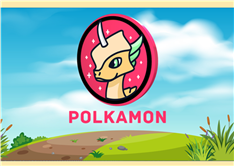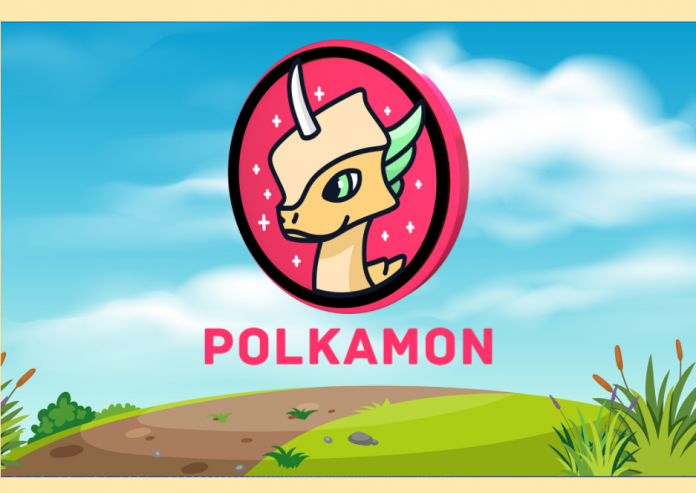Everyone is talking about NFTs, as they should. NFTs are the talk of the cryptocurrency space; if you haven’t heard about NFTs, what do you understand about the crypto space?
NFTs have gained traction recently and have seen use in blockchain gaming, the digital art space, and the digital collectibles space. However, not everyone understands them, because let’s be honest. They are a little difficult to understand. NFTs are basically a new way for people to spend their money or an innovative way to make a fortune. Some crypto-enthusiasts believe that NFTs have already surpassed cryptocurrencies in terms of popularity.
Such is the buzz around NFTs that a digital artwork created by the artist Beeple auctioned for $69 million. Add to this the approval from the likes of Elon Musk and
Before discussing Polkamon, we must understand what NFTs are and how they are changing the digital ownership landscape. Let’s get started.
Contents
- 1 What Is An NFT?
- 2 What Are The Characteristics That Make NFTs Unique?
- 3 Polkamon: The Next Generation Of NFTs
- 4 Characteristics Of Each Polkamon
- 5 The Team And the Technology Behind Polkamon
- 6 What Are The Features Of Polkamon?
- 7 The $PMON Token
- 8 The Ecosystem
- 9 What Is The Utility Of Polkamon?
- 10 Conclusion
What Is An NFT?
An NFTs, short for non-fungible tokens, are digital tokens based on the Ethereum blockchain. NFTs are unique assets that have their identifying information stored in smart contracts. The identifying information is what makes each NFT unique.
Because NFTs are non-fungible, one NFT cannot be exchanged with another. Non-fungible items are different from fungible items since the latter can be exchanged. Bitcoin is an example of a fungible asset because you can easily exchange one bitcoin for another bitcoin. Fiat currency is another example of a fungible asset, as you can exchange it. Fungible items are also divisible, allowing you to send a smaller amount of fungible assets.
NFTs are the complete opposite; since they are unique, individuals cannot exchange them. They are also not divisible, so if you wanted to send part of an NFT to somebody, you cannot.
As mentioned earlier, NFTs are almost exclusively based on the Ethereum blockchain using the ERC-721 token and the ERC-1155 token. Several blockchains like EOS and Tron have launched their token standards and are trying to get developers to build NFTs on their blockchains.
What Are The Characteristics That Make NFTs Unique?
- One NFT cannot be used in place of another. Each NFT is unique and has its unique information and characteristics. The information about the NFT is stored on smart contracts. An example of the non-interoperability of NFTs would be the game CryptoKitties. Users will not be able to use a digital asset from CryptoKitties in any other game.
- Data related to an NFT is stored on the blockchain, making it easily verifiable. The information on the blockchain can make it easy to establish ownership of the NFT and authenticate it.
- NFTs are immutable, meaning collectors and artists own their NFTs. This is very different from purchasing music or a movie because the person buying them doesn’t actually own them.
- Since NFTs run on blockchain technology, they are indestructible. Blockchains ensure that the data and information about the NFTs cannot be destroyed or manipulated.
Polkamon: The Next Generation Of NFTs
Polkamon are digital collectibles, each having a different level of scarcity. Every Polkamon is backed by a unique NFT and can be unpacked using $PMON tokens. The platform introduces 3D NFTs to the collectibles space. The collectibles can also be integrated into several blockchain-based products. Users can collect these rare and ultra-rare collectibles through Polkamon.
A rich metadata set describes the properties of each Polkamon. Polkamon can also be integrated into Layer-2 applications, and users can also incorporate them into games or digital art.
Characteristics Of Each Polkamon
Each Polkamon has unique characteristics that set it apart from the other. Some of the characteristics are
- Colors: Polkamon come in different shades and colors.
- Glitter: Glittering Polkamon are extremely rare and can be considered an extremely collectible Polkamon.
- Horn: Polkamon possesses horns that vary in shape and size, although the horns’ real reason is not yet known.
- Ultra-rare: Some Polkamon are extremely rare and are known as ultra-rare Polkamon. The bitcoin dragon is an example of an ultra-rare Polkamon.
The Team And the Technology Behind Polkamon
Polkamon is run by a team of three supremely talented software engineers. Leif Eric Leiser is the CEO and is an experienced full-stack developer and serial entrepreneur. Lennart Brandt is the CMO, and has quite a few years of experience in the crypto space, and has also founded several apps. Finn Hansen is an experienced frontend developer and an NFT collectibles enthusiast.
Polkamon is built on three layers, creating a sustainable ecosystem. The base layer is an ownership layer, basically a decentralized ownership system. This layer is supported by ERC20 tokens, making trades more accessible and improving liquidity. The second layer sits on top of the base layer and enriches NFTs through visuals and metadata. The final layer is the application layer. This layer confirms ownership of tokens through metadata and proven ownership.
What Are The Features Of Polkamon?
Polkamon has several features that make it unique. Some of the features are
- Staking: Users can stake $PMON and Polkamon and receive additional rewards each time there is a swap between $PMON and Polkamon.
- Polkamon is cross-chain: Polkamon is also available on blockchains like Ethereum and Polkadot, and users can access them by using the $PMON token. Users can also look for Polkamon that are unique to each network.
- Liquidity: The $PMON token provides liquidity to Polkamon and also provides a swapping mechanism
- Hyper-deflationary: Polkamon ensures scarcity of assets through burning a set number of $PMONs every time there is a reverse swap.
- Scarcity: Every Polkamon is unique and has a different level of scarcity. Some Polkamons are so rare that they can be defined as ultra-rare.
The $PMON Token
Users need the $PMON token to access Polkamon. A total of 10 million $PMON will be supplied. The initial supply of the $PMON tokens is 1.8 million tokens, with each token priced at $0.40. The project is cross-chain and is also available on other blockchains like Polkadot and Ethereum.
The Ecosystem
Polkamon has created an ecosystem of interconnected apps and marketplaces. Users can explore collections or present their own collections using native mobile apps. Users can also browse information about Polkamons and the Polkamon ecosystem while buying $PMON using the ecosystem’s apps. Users can keep their most valuable Polkamon with them at all times through the use of widgets.
What Is The Utility Of Polkamon?
Polkamon can be utilized in several ways; as digital collectibles, Polkamon are backed by NFTs and can be integrated into different blockchains and different products. Some of the uses of Polkamon are
- Layer 2 integration: Polkamon is easily integrated into Layer-2 applications. The metadata set describes the individual properties of each Polkamon.
- Proof of Ownership: Since NFTs back Polkamon, it can easily be integrated into games or digital art.
Conclusion
Polkamon is looking to kickstart the NFT and digital collectable space and push towards a future of NFT-based collectibles. With backing and support from Morningstar Ventures and Moonrock Capital, it will be interesting to see how the project meets its targets.
Source: Read Full Article

